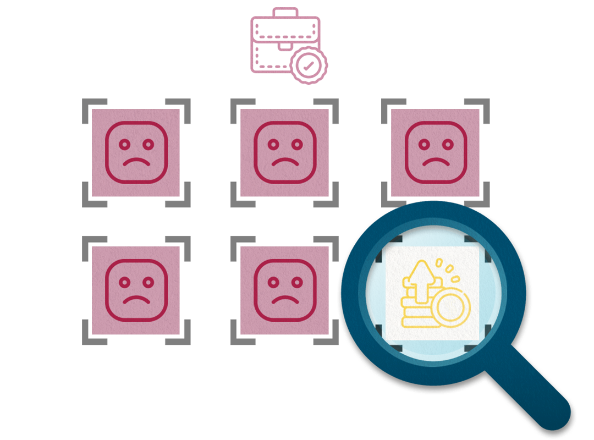Throughout the COVID-19 crisis, demand for workers in Science, Technology, Engineering and Mathematics (STEM) has continued. Looking ahead, the trend is expected to gain considerable momentum for the pandemic has accelerated the transition to a future of work closely connected to the STEM fields. Indeed, 90 percent of the world’s future jobs are estimated to require tech skills. But the equation is unbalanced, and gender inequality manifests itself in representation of women and men in fastest-growing jobs of the future like computer science and engineering.
Technological progress has led to dramatic shifts in the labour market making it imperative to reevaluate women’s engagement in STEM. One alarming statistic -- the International Monetary Fund has found that 180 million jobs where women are predominantly employed have a 70 percent or higher probability of automation. This means women will require tech skills to adapt to new types of work and working arrangements. However, they are at risk of being left behind in the global digital transformation.
In Belarus, the digital transformation of the economy will have a significant impact on the integrated development of the country. Understanding the need to keep up with the global trends, Belarus has made digital transformation the top priority in its development agenda. According to the national Sustainable Development Strategy 2035, national priorities include the digital transformation of the economy and the development of relevant technical competencies.
Accessing STEM jobs requires challenging gender stereotypes
Women in Belarus tend to pursue degrees in arts, humanities, law or economics. They are underrepresented at technical universities. They comprise only 23 percent of graduates in the information, communication and technology fields. Recent data shows that about 44 percent of employees in Belarus’ information and communication sectors are women, but women are more likely to work in lower-paid and non-technical roles rather than in higher-paid development, engineering and technical project management roles.
Gender stereotypes imposed from an early age contribute to sustaining gender gaps in STEM fields. Gender stereotypes could reduce the likelihood that women apply to jobs in STEM. Even if women do apply, gender stereotypes negatively affect their performance during the recruitment process and at work.
Women may not apply to work in technical sectors or may underperform during the recruitment process because stereotypes make them feel like they do not belong in technical sectors. Academics have hypothesized that during recruitment, candidates will assess their likelihood of fitting in an organization. If women candidates predict that social isolation is likely - as a woman in the male-dominated technical sector in Belarus, this can impact their likelihood of seeking to advance professionally in these sectors.
Women may also underperform at work or during recruitment processes for technical jobs because they face a stereotype threat that occurs when reminded of negative stereotypes about their group. For example, women are reminded that they are bad at math or are not suited for technical roles. When this negative stereotype is highlighted, women staff become anxious about fulfilling this negative stereotype – a state of mind that can impair performance.
Creating stepping stones to overcome barriers
Advancing gender equality calls for innovative approaches to challenge social norms and practices that lie at the heart of gender inequality. In 2018 UNDP Belarus, with the support of the British Embassy in Minsk, launched an initiative to explore the barriers impacting women’s employment and entrepreneurship in Belarus, including in STEM sectors, and to develop and test behavioural solutions thereto.
Behavioural insights are a powerful tool to nudge women into sundering barriers created by gender stereotypes and social norms and to increase their participation in the economy. In collaboration with the Behavioural Insights Teams, a number of solutions were developed to increase women’s participation in the STEM sectors in Belarus.
One way to counter a stereotype threat is to ask people to think about and express what they value. This is a called ‘a values affirmation’ (VA). It is thought that values affirmation exercises are successful because asking people to reaffirm their values increases their sense of self-worth which, in turn, could protect them from a stereotype threat. In the Belarusian context, VA messages could be sent to women candidates applying for roles in large tech companies. Or, if women perform less well in STEM subjects at school or university, students could be encouraged to conduct VA exercises at timely moments during a school term.
Another solution is to build on existing programmes. In Belarus, various NGOs and tech companies run programmes to try to support the development of technical skills. These are promising stepping stones to motivating women to engage in STEM subjects.
Letters from identifiable role models might increase the sense of belonging and encourage young women to apply to technical roles. For example, women working or studying in the STEM sectors might send letters to school age women students in Belarus who are deciding what subjects or degrees to pursue.
The fact that STEM jobs have a good earning potential is inherently connected to the future of work. Presenting women with information about their likely future earnings in certain roles or sectors at timely moments may affect their career choices and encourage them to apply to higher-paying technical sectors. For example, in the Belarusian context, women deciding what to study at university could be shown the likely salaries for typical graduates of each university course. Or those choosing requalification courses at their Local District Executive Committee could be told what qualifications are in demand in their area and what the likely salaries are for graduates of each course.
Encouraging women to participate in the STEM workforce and promoting equal pay for equal work could contribute to closing the income gap and improving the quality of life for both women and men. Advancing gender equality in STEM fields, instead of women being systematically tracked away from science and tech jobs, will help men and women to realize their full professional potential, and also enable the Belarusian economy to keep up with the growing demand for people with STEM skills.

 Locations
Locations








